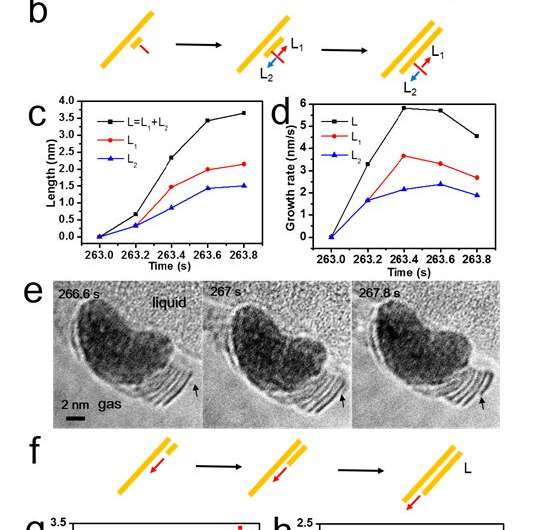Tracking the atomic pathways by in-situ liquid cell TEM

Recently, platinum-containing core-shell structures with tunable magnetic and catalytic properties have attracted intensive attentions and offered a wide range of applications. To date, their synthetic routes are mostly based on galvanic replacement, co-reduction, thermal decomposition and seed-mediated method. But the detailed formation mechanisms of core-shell structures in solution, especially, at gas-liquid interface are still not completely clear, which is mostly achieved based on post reaction studies or ex situ characterizations. In this regard, it is worthwhile but still very challenging to directly visualize the complicated and delicate dynamic processes.
Technical advantages of in-situ liquid electron microscopy (TEM) allow us to monitor the growth trajectory of pure metal nanoparticles in liquid media, including nucleation growth, nanorod self-assembly, and electrochemical deposition. Compared with pure metal nanocrystals, the growth pathway for alloy and its oxide core-shell structures is more complicated. It is noteworthy that little is known about the atomic growth pathway of Pt based-oxide core-shell structures and structural stability in solution, especially, at the gas-liquid interface. Due to the lack of direct observation methods with high spatial resolution, some intermediate states may be easily missed.
Herein, Honggang Liao's group first observed the atomic growth way of Pt3Ni-Ni(OH)2 core-shell structure at the gas-liquid interface using in-situ liquid cell TEM. Experiment results revealed the underlying growth and transformation mechanisms of the Pt3Ni-Ni(OH)2 core-shell structure by systematically changing the Ni:Pt ratio in the precursor solution and tuning electron beam dose rate. Key questions regarding the growth mechanism for single- and multi-layer Ni(OH)2 flakes were addressed. It is anticipated that this work could provide atomic insights on the rational design of metal-2-D core-shell structures for potential wide range applications.
More information: Junyu Zhang et al, Tracking the atomic pathways of Pt3Ni-Ni(OH)2 core-shell structures at the gas-liquid interface by in-situ liquid cell TEM, Science China Chemistry (2020). DOI: 10.1007/s11426-019-9663-8
Provided by Science China Press





















